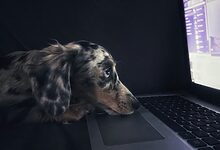Pet Airline Travel Packing Guide: Essential Items for Flying with Your Furry Friend in 2025

Here’s something that might surprise you.
Nearly 20% of travelers now bring their pets along on flights. That’s millions of furry companions soaring through the skies alongside their devoted humans each year.
But here’s the truth.
Packing for pet air travel isn’t just about tossing food and toys into a bag. It requires strategic planning, safety-first thinking, and understanding exactly what your four-legged friend needs to stay comfortable, healthy, and secure at 30,000 feet.
Whether you’re flying across the country for a family reunion or jetting off to an exciting new adventure, this comprehensive guide walks you through every essential item your pet needs for airline travel. We’ll cover food and water solutions, comfort items, safety equipment, health documentation, and breed-specific considerations.
Most importantly, we’ll prioritize your pet’s safety and well-being above everything else.
Table of contents
- Essential Pet Airline Travel Safety Guidelines & Expert Insights
- Complete Pet Airline Travel Packing Solutions Guide
- Health Documentation & Medical Records – The Non-Negotiable Essentials
- The Right Carrier – Your Pet’s Flying Home
- Food & Water Solutions – Maintaining Nutrition Safely
- Comfort Items & Toys – Reducing Travel Anxiety
- Safety Equipment – Leashes, Harnesses & ID Tags
- Waste Management Supplies – Handling Accidents Gracefully
- Medication & First Aid – Emergency Preparedness
- Calming Aids – Managing Travel Anxiety Safely
- Implementation Roadmap – Your Airline Travel Success Timeline
- Breed-Specific Packing Considerations
- Professional Resources & Essential Tools
- Common Pet Airline Travel Challenges & Solutions
- Expert Pet Parent FAQ – Pet Airline Travel Packing
- Seasonal & Life-Stage Packing Adaptations
- Celebrating Your Pet Airline Travel Success
- Final Thoughts: Prioritizing Your Pet’s Wellbeing
Essential Pet Airline Travel Safety Guidelines & Expert Insights
Veterinary-Approved Safety Protocols
Before you pack anything, safety comes first.
Your pet’s health and well-being should guide every single packing decision you make. Even if a state doesn’t require rabies vaccinations, all dogs, cats and ferrets should be vaccinated for their protection.
Here’s what veterinary professionals strongly recommend.
Schedule a wellness exam and obtain health certificates dated within a certain time period before your trip. This gives your veterinarian time to update vaccinations and address any health concerns. Additionally, this appointment allows you to discuss travel anxiety management options.
Importantly, sedating your pet for travel is generally not advised due to potential risk for respiratory or cardiovascular problems with altitude changes. Never sedate without explicit veterinary guidance.
Furthermore, know the warning signs requiring immediate attention. These include excessive panting, vomiting, diarrhea, lethargy, or unusual behavioral changes during travel.
Keep the phone numbers of your veterinarian, the National Animal Poison Control Center of the ASPCA (1-888-426-4435), and a 24-hour emergency veterinary hospital in the area where you will be visiting, easily accessible.
Age, Breed, and Health Considerations
Not all pets can safely fly.
Most U.S. airlines require pets to be at least 8 weeks old for domestic flights. Senior pets might have mobility issues or chronic conditions requiring special accommodations.
Critically, some airlines have breed restrictions, particularly for brachycephalic pets. Short-nosed breeds like Bulldogs, Pugs, and Persian cats face significantly higher risks during air travel due to breathing difficulties.
Moreover, certain health conditions make flying dangerous.
Pets with heart conditions, respiratory issues, or severe anxiety need extra precautions or alternative care arrangements. Always discuss your specific pet’s ability to fly safely with your veterinarian before booking tickets.
Individual Pet Personality Factors
Your pet’s temperament matters enormously when considering air travel.
Some dogs adapt easily to new experiences and confined spaces. Others become severely anxious in unfamiliar environments. Cats generally prefer routine and familiar surroundings.
Therefore, honestly assess your pet’s personality before deciding to fly together.
The ASPCA advises pet parents to think twice about flying their pets on commercial airlines, especially if they plan on checking them in as cargo. Not every pet enjoys or tolerates air travel safely, and that’s perfectly okay.
Complete Pet Airline Travel Packing Solutions Guide
Health Documentation & Medical Records – The Non-Negotiable Essentials
This is absolutely critical and must be your first priority.
Never attempt to fly without proper health documentation. Airlines won’t allow your pet to board without required paperwork.
What You Must Pack:
In many cases, your pet will need a health certificate and possibly veterinary records, often dated within a certain time period before your trip. Specifically, most airlines require certificates issued within 10 days of travel.
Pack current vaccination records, especially rabies documentation. Request a copy of your pet’s full medical history so you can have it handy in case of an emergency during travel.
Additionally, if traveling internationally, requirements become more complex. Vaccinations, microchips and relevant lab tests are some things that may be needed, potentially months prior to flying.
Furthermore, include your veterinarian’s contact information and emergency contacts at your destination.
Pro Organization Tip:
Store all documents in a waterproof folder or zippered pouch. Keep copies in both your carry-on and checked baggage. Take photos of all documents on your phone as backup.
Documentation Checklist:
- Health certificate (issued within 10 days of travel)
- Current vaccination records (especially rabies)
- Complete medical history
- Prescription medications with veterinarian instructions
- Veterinarian contact information
- Destination emergency veterinary clinic information
- Microchip registration number
- Recent photo of your pet
- International travel requirements (if applicable)
The Right Carrier – Your Pet’s Flying Home
Choosing the correct carrier ranks as one of your most important decisions.
Pick one that’s durable, comfortable, and meets airline requirements. Your carrier must fit specific airline dimensions while providing adequate space for your pet’s comfort.
In-Cabin Carrier Requirements:
In-cabin pets must fit under the seat. Most airlines specify maximum dimensions around 17-18 inches long, 11 inches wide, and 9-10 inches high, though this varies by carrier.
Importantly, choose soft-sided carriers for in-cabin travel. These provide flexibility when sliding under seats while maintaining structure and ventilation.
“I highly recommend a soft-sided carrier. It’s so much easier to manage, and it’s easier to fit under the seat on the plane,” notes an experienced pet traveler.
Cargo Crate Requirements:
Purchase a USDA-approved shipping crate that should be large enough for your pet to comfortably stand, sit and turn around in.
Additionally, the crate should meet International Air Transport Association (IATA) standards, meaning it’s secure, properly ventilated on at least three sides, and large enough for the pet to move freely.
Essential Carrier Features:
- Airline-approved design and dimensions
- Proper ventilation on multiple sides
- Secure but not locked closures
- Absorbent, comfortable bedding
- Identification labels with contact information
- Sturdy construction that won’t collapse
Carrier Preparation Steps:
Acclimate your pet weeks before travel. Leave it open in your home, place familiar bedding inside and encourage your pet to explore it voluntarily. This familiarity significantly reduces travel anxiety.
Furthermore, “I always bring a light blanket that smells like home. It helps my dog settle during the flight and covers the carrier if she needs quiet time,” recommends an experienced pet parent.
Food & Water Solutions – Maintaining Nutrition Safely
Proper nutrition and hydration during air travel requires careful planning.
Food Packing Strategy:
Pack a zip-lock of food in appropriate portions for your entire trip plus extra for unexpected delays.
Importantly, avoid feeding your pet a heavy meal within 4 hours of flight time. This reduces motion sickness and bathroom accidents.
However, pack sufficient food, treats, and a collapsible water bowl in your carry-on to accommodate potential overnight stays due to delays.
What to Pack – Food Items:
- Measured portions in individual zip-lock bags
- Extra day’s supply for delays
- Regular food (avoid diet changes during travel)
- Small treats for positive reinforcement
- Portable food container with secure lid
- Feeding schedule written down
Water & Hydration Solutions:
Bring collapsible bowls that pack flat and expand when needed.
Additionally, place a small dish of water in the crate if your pet travels in cargo. Use dishes that attach securely to prevent spills during loading.
Furthermore, offer ice cubes rather than full water bowls immediately before travel. This provides hydration without causing bathroom urgencies or spills.
Hydration Packing List:
- Collapsible water bowl (at least one, preferably two)
- Bottled water from home (prevents digestive upset)
- Ice cubes in sealed bag
- Attached water dish for cargo crate
- Backup collapsible bowl
“My must-haves: collapsible water bowl, puppy pads, zip-lock of food, favorite toy, and paper towels,” shares a seasoned pet traveler.
Comfort Items & Toys – Reducing Travel Anxiety
Familiar items from home dramatically reduce travel stress.
Essential Comfort Items:
Your pet’s favorite blanket or bedding provides enormous comfort. You may want to consider bringing a toy, blanket or something comforting for your pet during travel.
Importantly, choose items that smell like home and family. These scents calm anxious pets in unfamiliar environments.
“I always bring a light blanket that smells like home. It helps my dog settle during the flight,” notes an experienced traveler.
What to Pack – Comfort & Entertainment:
- Favorite blanket or bedding (with home scents)
- One or two favorite toys (avoid noisy ones)
- Chew toys for stress relief
- Familiar clothing item with your scent
- Pheromone spray for the carrier
- Calming treats (vet-approved)
Size Considerations:
Pack compact items that fit comfortably in the carrier without overwhelming limited space. Avoid large or bulky toys that reduce your pet’s room to move.
Furthermore, skip squeaky or noisy toys that might disturb other passengers during flight.
Safety Equipment – Leashes, Harnesses & ID Tags
Safety equipment protects your pet during airport navigation and emergencies.
Required Safety Items:
You’ll need a harness, leash, and ID tag for TSA screenings and bathroom breaks.
Importantly, TSA requires you to remove your pet from their carrier during security screening. A secure harness prevents escapes during this stressful moment.
“Pack an extra leash! Learned that one the hard way when ours broke during a layover,” warns one pet parent.
Safety Equipment Checklist:
- Well-fitted harness (not just a collar)
- Primary leash (6-foot length recommended)
- Backup leash
- ID tags with current contact information
- Temporary travel tag with destination phone number
- Microchip with updated registration
- Recent photo of your pet on your phone
ID Tag Requirements:
Your pet should wear a collar and identification tag imprinted with your name, phone number and any relevant contact information.
Additionally, include a temporary travel tag with your cell phone and destination phone number for the duration of your trip.
Waste Management Supplies – Handling Accidents Gracefully
Accidents happen, especially during stressful travel. Be prepared.
Essential Waste Supplies:
Pack puppy pads and paper towels. Line your carrier with absorbent pads before travel.
Bring poop bags and pee pads to line the carrier, plus extras for cleanups.
Complete Waste Management Kit:
- Multiple puppy pads or pee pads
- Disposable waste bags
- Paper towels or cleaning wipes
- Pet-safe cleaning spray
- Hand sanitizer
- Plastic bags for soiled items
- Extra carrier bedding
Usage Strategy:
Place one absorbent pad at the carrier bottom before departure. Pack additional pads in easily accessible locations for quick changes during layovers.
Furthermore, before departure or after arrival, give your dog a potty break before securing it in the crate for travel.
Medication & First Aid – Emergency Preparedness
Medical preparedness can be lifesaving during travel complications.
Medication Packing Guidelines:
Pack any necessary medications in your carry-on to be prepared for unexpected delays.
Importantly, bring more medication than you think you’ll need. Flight delays and cancellations happen unpredictably.
Medication & First Aid Checklist:
- All prescription medications (7-10 day supply minimum)
- Veterinarian prescription information
- Anti-anxiety medication (if prescribed)
- Anti-nausea medication (if recommended)
- Basic first-aid supplies
- Gauze and bandages
- Antiseptic wipes
- Tweezers for splinter or tick removal
- Thermometer
- Emergency veterinary contact list
Medication Storage:
Store medications in original prescription bottles with clear labels. Include dosing instructions from your veterinarian.
Additionally, keep all medications in your personal carry-on bag, never in checked luggage or pet cargo.
Calming Aids – Managing Travel Anxiety Safely
Many pets experience significant anxiety during air travel.
Safe Calming Solutions:
Calming aids include their favorite toy, a soft item with your scent, and other calming products.
Importantly, discuss anti-anxiety options with your veterinarian before travel. If you do choose to sedate your pet, it’s best to try a trial-run at home, before your trip, at a time when your veterinarian is available.
However, generally, sedating your pet for travel is not advised due to the potential risk for respiratory or cardiovascular problems with altitude changes.
Vet-Approved Calming Options:
- Pheromone sprays or diffusers
- Calming treats with natural ingredients
- Thundershirt or anxiety wrap
- Familiar scented items
- Prescribed anti-anxiety medication (veterinarian-approved only)
What NOT to Pack:
Never use over-the-counter sedatives without veterinary consultation. Never use medications prescribed for humans. These can be extremely dangerous at high altitudes.
Implementation Roadmap – Your Airline Travel Success Timeline
Phase 1: Planning & Preparation (6-8 Weeks Before Flight)
Early preparation ensures smooth travel and prevents last-minute stress.
Week 6-8 Tasks:
Research airline pet policies thoroughly. Each carrier has unique requirements regarding carrier dimensions, weight limits, and fees.
Make a list of all of your questions and be sure to do research and investigate with the airline before planning your trip.
Schedule your veterinarian appointment for health certificates and documentation. Often times, these documents are required to be dated within a certain time period before your trip.
Begin carrier acclimation immediately. Acclimate your pet to its carrier well in advance by leaving it open in your home, placing familiar bedding inside and encouraging your pet to explore it voluntarily.
Initial Preparation Checklist:
- Research and compare airline pet policies
- Book pet reservation with airline
- Purchase airline-approved carrier
- Schedule veterinarian wellness exam
- Start carrier training daily
- Verify microchip registration current
- Research destination pet requirements
- Book pet-friendly accommodations
Phase 2: Documentation & Training (3-4 Weeks Before Flight)
Mid-preparation focuses on documentation gathering and continued training.
Week 3-4 Tasks:
Continue daily carrier training, gradually increasing time your pet spends inside. Practice closing the door and carrying the carrier around your home.
Confirm all vaccination requirements are current. Some destinations require specific immunizations.
If flying internationally, check government websites for your international destinations as well as the USDA website to help you prepare for how much time and additional documentation may be needed.
Documentation & Training Tasks:
- Continue carrier acclimation (20-30 minutes daily)
- Practice short car trips with carrier
- Gather vaccination records
- Update ID tags with travel contact information
- Purchase travel supplies and essentials
- Create packing checklist
- Confirm airline pet reservation
- Test calming aids (if using)
Phase 3: Final Preparations (1-2 Weeks Before Flight)
Final preparations ensure everything is ready for departure day.
Week 1-2 Tasks:
Visit your vet and obtain a signed health certificate for your pet no more than 10 days prior to travel.
Pack your pet’s suitcase with all essential items. Don’t wait until the last minute.
Prepare your carry-on emergency kit with food, water, medications, and waste supplies.
Final Week Checklist:
- Obtain health certificate (within 10 days of travel)
- Pack pet suitcase completely
- Prepare carry-on emergency supplies
- Confirm flight times and details
- Check weather forecast at destination
- Print all documentation
- Take recent photos of your pet
- Prepare carrier with familiar bedding
Phase 4: Departure Day – Execution & Safety
Departure day requires careful attention to timing and safety protocols.
Morning of Flight:
Before hitting the road, have your dog burn off some energy with a brisk walk or rousing game of fetch. Exercise helps them stay calmer during travel.
Feed a light meal 4-6 hours before departure. Avoid heavy feeding close to flight time.
Before departure, give your dog a potty break before securing it in the crate for travel.
Departure Day Timeline:
- Feed light meal (4-6 hours before flight)
- Exercise thoroughly (2-3 hours before departure)
- Final potty break before leaving home
- Arrive airport 2-3 hours early for pet processing
- Keep pet hydrated with small amounts of water
- Final bathroom break before security
- Stay calm and confident for your pet
At the Airport:
Once you have confirmed your pet’s reservation, you may receive additional instructions from the airline. Follow all airline staff directions carefully.
If your pet travels in cargo, tell every airline employee you encounter — on the ground and in the air — that you are traveling with a pet in the cargo hold.
Furthermore, if the plane is delayed, or if you have any concerns about the welfare of your pet, insist that airline personnel check the animal whenever feasible.
Breed-Specific Packing Considerations
Small Breed & Toy Dog Packing Essentials
Small breeds have unique needs during air travel.
Size-Specific Modifications:
Small dogs and cats usually qualify for in-cabin travel, reducing stress significantly. However, they’re more susceptible to temperature changes and require extra warmth.
Pack additional blankets or a small sweater for temperature regulation during flight. Airport air conditioning can be extremely cold.
Small Breed Special Items:
- Extra layers for warmth
- Smaller water and food bowls
- Tiny waste pads (appropriate size)
- Compact toys that fit carrier
- Gentle harness (prevents neck strain)
- Carrier with extra padding
Weight Considerations:
Most airlines have specific weight limits for in-cabin pets, with combined pet and carrier weight restrictions. Verify your pet meets requirements before booking.
Large Breed & Cargo Travel Adaptations
Large dogs require cargo travel and extensive preparation.
Cargo-Specific Packing:
Large breeds need significantly more planning and specialized equipment. Crates should have absorbent lining, food and water dishes, and clear labeling indicating a live animal.
Write “Live Animal” in large letters on at least two sides of the crate, and use arrows to prominently indicate the upright position of the crate.
Large Breed Cargo Essentials:
- IATA-compliant hard-sided crate
- Multiple absorbent pads
- Attached food and water dishes
- Clear “Live Animal” labels
- Contact information on crate
- Photo of pet affixed to crate
- Feeding instructions for airline staff
Prior to your trip, tape a small pouch of dried food outside the crate so airline personnel will be able to feed your pet in case they get hungry during a layover.
Temperature Safety:
Fly during times when temperature ranges are within 45 to 85 degrees to avoid your pet being exposed to extreme temperatures.
Brachycephalic (Short-Nosed) Breed Special Precautions
Short-nosed breeds face heightened risks during air travel.
Critical Safety Warning:
Many airlines now have breed restrictions, with some not allowing brachycephalic pets to travel at all. These breeds include Bulldogs, Pugs, Boston Terriers, Boxers, Shih Tzus, and Persian cats.
Importantly, these breeds experience breathing difficulties at high altitudes and in stressful situations. Many veterinarians strongly advise against air travel for brachycephalic breeds.
If Travel Is Absolutely Necessary:
- Choose coolest times of day for flights
- Book direct flights only (no layovers)
- Use larger carrier for maximum airflow
- Monitor breathing carefully
- Have emergency veterinary contacts ready
- Consider alternative travel methods seriously
Senior & Special Pet Modifications
Older pets and those with health conditions need extra accommodations.
Age-Related Considerations:
Senior pets may have arthritis, reduced mobility, or chronic health conditions requiring medication management during travel.
Pack extra comfort padding for achy joints. Bring all medications with detailed dosing schedules.
Special Pets Packing Additions:
- Extra medications (double normal supply)
- Comfort padding for joints
- Easy-access water for medication administration
- Veterinary records detailing conditions
- Emergency medication instructions
- Cooling mat or warming pad (as appropriate)
- Easier-to-digest food options
Health Monitoring:
Perform a daily health check on your pet when away from home to assess their physical and behavioral changes.
Multi-Pet Travel Organization
Traveling with multiple pets requires meticulous organization.
Multiple Pet Challenges:
Airlines typically limit the number of pets per passenger and per flight. Book early to secure spots for all your companions.
In cabin, two similar-size pets of the same species may share one carrier on some airlines, though restrictions apply.
Multi-Pet Packing Strategy:
- Color-code supplies for each pet
- Pack separate food portions
- Individual carriers (usually required)
- Separate leashes and harnesses
- Individual documentation sets
- Staggered feeding schedules
- Extra hands for airport navigation
Professional Resources & Essential Tools
Veterinary & Professional Services
Professional guidance ensures the safest travel experience.
When to Consult Professionals:
Always consult your veterinarian before booking flights. If your pet is prone to anxiety, visit the vet before taking flight to discuss options, including medication or treats that can help reduce anxiety.
Additionally, vets can give you added peace of mind that your pet can physically travel well.
Professional Service Checklist:
- Pre-travel veterinary wellness exam
- Health certificate acquisition
- Vaccination updates
- Travel anxiety consultation
- Emergency veterinary contacts at destination
- Pet insurance consideration
- Professional pet transport services (for cargo)
Cost Expectations:
Airline fees for pets typically range $35–$150 per pet, per flight. This doesn’t include carrier costs, health certificates, or other travel essentials.
Budget several hundred dollars for complete pet air travel preparation and fees.
Recommended Equipment & Supply Brands
Quality equipment makes significant safety differences.
Carrier Recommendations:
Choose carriers specifically designed for airline travel. Popular brands include Petmate, and Sleepypod, all known for durability and airline compliance.
Verify your chosen carrier meets your specific airline’s dimension requirements before purchasing.
Food & Water Products:
Collapsible silicone bowls save space and function effectively. Look for leak-proof designs that fold completely flat.
Safety Equipment:
Invest in escape-proof harnesses with double security features. Front-clip harnesses provide better control during airport navigation.
Educational Resources & Continuing Learning
Stay informed about evolving airline policies and best practices.
Reliable Information Sources:
- ASPCA Travel Safety Guidelines
- CDC Pet Travel Safety
- Individual airline pet policy pages
- American Veterinary Medical Association resources
- Pet travel forums and communities
Staying Current:
Airline pet policies change regularly. Always verify current requirements directly with your airline 48-72 hours before departure.
Common Pet Airline Travel Challenges & Solutions
Behavioral Resistance & Anxiety Management
Many pets experience significant travel anxiety requiring patient management.
Identifying Anxiety Signs:
Watch for excessive panting, pacing, whining, trembling, or attempts to escape the carrier. These indicate stress requiring intervention.
Anxiety Reduction Strategies:
Continue positive reinforcement training with the carrier. Never force your pet inside or use the carrier as punishment.
Acclimating your pet to its carrier well in advance reduces anxiety during travel. Spend several weeks making the carrier a positive, comfortable space.
Use calming pheromone sprays inside the carrier 15-30 minutes before departure.
Professional Intervention Indicators:
If your pet shows extreme anxiety despite weeks of training, consult a veterinary behaviorist. Some pets simply cannot tolerate air travel safely, and alternative arrangements may be necessary.
Health-Related Travel Complications
Health issues can arise unexpectedly during travel.
Motion Sickness Management:
Some pets experience motion sickness during flights. Symptoms include drooling, whining, vomiting, or extreme lethargy.
Discuss anti-nausea medication with your veterinarian before travel. Never use human motion sickness medications on pets.
Recognizing Emergencies:
If you have concerns about your pet, contact your veterinarian or a local veterinarian.
Emergency signs include difficulty breathing, collapse, seizures, extreme lethargy, or refusal to respond. These require immediate professional attention.
Emergency Response:
Always remember: follow up any first aid administered to your pet with immediate veterinary care. First-aid care is not a substitute for veterinary care, but it may save your pet’s life until veterinary treatment is available.
Environmental & Logistical Barriers
Practical challenges arise even with perfect planning.
Flight Delays & Cancellations:
Unexpected delays can occur, so pack sufficient food, treats, a collapsible water bowl, waste bags and necessary medications in your carry-on to accommodate potential overnight stays.
Always pack 2-3 extra days of supplies beyond your planned trip length.
Temperature Extremes:
Pets are not accepted during extreme weather forecasts (under or over certain temperatures).
Airlines may refuse pet travel when temperatures fall below 45°F or rise above 85°F. Check weather at both departure and arrival cities.
Seasonal Considerations:
Schedule flights during cooler parts of the day and avoid peak travel times to minimize stress and exposure to extreme temperatures.
Summer months require early morning flights. Winter travel needs afternoon scheduling for warmer temperatures.
Airport Navigation & TSA Procedures
Security screening with pets requires specific procedures.
TSA Security Process:
You must remove your pet from their carrier during security screening. The carrier goes through the X-ray machine separately.
Carry your pet through the metal detector while airport staff screens the empty carrier. This prevents escape opportunities.
Bathroom Break Challenges:
Most airports now have pet relief areas, but they’re not always conveniently located. Research your specific airport’s facilities before arrival.
Give your dog a potty break before securing it in the crate for travel.
Plan airport arrival time allowing for bathroom breaks before and after security.
Expert Pet Parent FAQ – Pet Airline Travel Packing
Getting Started Safely
Q: What age does my pet need to be to fly on a commercial airline?
Most U.S. airlines require pets to be at least 8 weeks old for domestic flights. For international or long-haul travel, the minimum age may be 12–16 weeks to ensure they’ve received core vaccines, such as rabies.
Importantly, very young and very senior pets face higher travel risks. Consult your veterinarian about whether your pet’s age makes flying safe.
Q: What health documentation do I absolutely need to fly with my pet?
Most airlines require a recent health certificate issued within 10 days of travel from a licensed veterinarian stating your pet is fit to fly.
Additionally, you’ll need proof of rabies vaccination, especially for international travel. Some destinations require additional documentation like microchip verification and specific disease testing.
Q: How do I know if my pet is physically able to fly safely?
Schedule a pre-travel veterinary consultation specifically discussing air travel. Vets can give you added peace of mind that your pet can physically travel well.
Your veterinarian will assess your pet’s heart and respiratory health, age-related concerns, and breed-specific risks. Be honest about your travel plans so they can provide accurate guidance.
Q: Should I sedate my pet for the flight?
Generally, sedating your pet for travel is not advised due to the potential risk for respiratory or cardiovascular problems with altitude changes.
However, if your veterinarian determines sedation is necessary, it’s best to try a trial-run at home, before your trip, at a time when your veterinarian is available to determine how your pet reacts.
Implementation Challenges
Q: My pet hates their carrier. How can I help them accept it?
Start carrier training weeks before travel. Leave it open in your home, place familiar bedding inside and encourage your pet to explore it voluntarily. This familiarity can reduce anxiety during travel.
Feed meals inside the carrier. Place favorite treats inside. Never force your pet into the carrier or use it for punishment. Make it their safe, comfortable space through positive associations.
Q: How much food and water should I pack for my pet?
Pack sufficient food, treats, a collapsible water bowl, waste bags and necessary medications in your carry-on to accommodate potential overnight stays due to delays.
Specifically, bring enough food for your entire trip plus 2-3 extra days. Pack individual portions in zip-lock bags for convenience. Bring bottled water from home to prevent digestive upset from unfamiliar water sources.
Q: What if my pet has an accident in their carrier during the flight?
Accidents happen, especially during stressful travel situations. Line your carrier with absorbent puppy pads before departure.
Pack extra pads, paper towels, cleaning wipes, and spare bedding in your carry-on. During layovers, you can clean the carrier and replace soiled items. Flight attendants typically cannot assist with pet accidents, so you must handle this yourself.
Q: Can I take my pet out of their carrier during the flight?
No. Airlines require pets to remain inside their carriers for the entire flight, secured under the seat in front of you.
This rule exists for safety reasons—turbulence, sudden movements, or emergency situations could injure loose pets. Additionally, other passengers may have allergies or fears requiring pets to stay contained.
Advanced Optimization
Q: What’s the best time of year to fly with pets?
Spring and fall typically offer the most comfortable temperatures for pet travel. Avoid peak summer heat and winter cold when possible.
Additionally, fly during times when temperature ranges are within 45 to 85 degrees to avoid your pet being exposed to extreme temperatures. Choose early morning or evening flights during summer, and midday flights during winter.
Q: Should I book direct flights or are layovers acceptable?
Always book direct flights whenever possible. Layovers increase stress, extend travel time, and create more opportunities for complications.
If your pet travels in cargo, layovers present additional risks during transfers between aircraft. Direct flights minimize handling, reduce exposure time, and get your pet to the destination faster.
Q: How can I make international travel with my pet easier?
Start planning several months in advance. International travel requires significantly more documentation than domestic flights.
Check government websites for your international destinations as well as the USDA website to help you prepare for how much time and additional documentation may be needed. Requirements often include microchipping, specific vaccinations, blood tests, and quarantine periods.
Q: Are there alternatives to flying my pet in cargo?
For large dogs that don’t qualify for cabin travel, consider these alternatives: driving instead of flying, using professional pet transport services that specialize in ground transport, or arranging temporary care at your departure location.
Sometimes the kindest choice is leaving your pet in familiar surroundings with trusted caregivers rather than subjecting them to stressful cargo travel.
Emergency & Health Concerns
Q: What should I do if my pet shows signs of distress during the flight?
Stay calm—your pet senses your emotions. Speak softly and reassuringly to your pet through the carrier. Place your hand near the carrier door so they can smell you.
If distress continues or worsens, alert flight attendants immediately. They cannot remove your pet from the carrier, but they can help assess the situation and potentially contact the captain.
For severe distress, the captain may arrange for veterinary services to meet the aircraft upon landing.
Q: How do I find emergency veterinary care at my destination?
Research and save emergency veterinary contact information before departure. Keep the phone numbers of your veterinarian, the National Animal Poison Control Center of the ASPCA (1-888-426-4435), and a 24-hour emergency veterinary hospital in the area where you will be visiting easily accessible.
Save these numbers in your phone and write them down in your documentation folder. Know the location of the nearest 24-hour emergency clinic to your destination accommodations.
Q: What if my pet escapes at the airport?
Prevention is critical. Always use a secure, escape-proof harness during TSA screening and bathroom breaks. Double-check all carrier closures before and after security.
If escape occurs, immediately alert airport security and airline staff. Provide them with your pet’s photo and description. Stay calm and follow their instructions. Most airports have protocols for locating loose animals.
Q: My pet takes daily medication. How do I manage this during travel?
Pack all medications in your carry-on bag with clear dosing instructions. Bring more than you need—at least 7-10 days’ supply beyond your trip length.
Administer medications on schedule as much as possible, though slight delays due to travel are usually acceptable. Discuss timing adjustments with your veterinarian before departure. Bring small treats or food to help administer pills if needed.
Seasonal & Life-Stage Packing Adaptations
Summer Travel Modifications
Hot weather creates unique challenges for flying pets.
Temperature Safety:
Airlines may refuse pet travel when temperatures exceed 85°F at departure, arrival, or connection cities. Check weather forecasts carefully before booking summer flights.
Schedule early morning flights before temperatures rise. Avoid afternoon departures during hot months.
Summer-Specific Packing:
- Cooling mat for carrier
- Extra water supply
- Frozen water bottles (melt during travel)
- Lighter bedding materials
- Cooling bandana or vest
- Portable fan for airport waits
Heat Stress Warning Signs:
Watch for excessive panting, drooling, lethargy, or bright red gums. These indicate dangerous overheating requiring immediate veterinary attention.
Never leave your pet in a carrier in direct sunlight or hot cars while waiting for flights.
Winter Travel Considerations
Cold weather requires different preparations entirely.
Temperature Concerns:
Airlines typically refuse pet travel when temperatures drop below 45°F. Very small, short-haired, or senior pets are especially vulnerable to cold.
Choose midday flights when temperatures peak. Avoid early morning or evening departures during winter months.
Winter-Specific Packing:
- Extra blankets and bedding
- Pet sweater or jacket
- Warming pad (airline-approved)
- Additional comfort layers
- Paw protection wax or booties
- Extra towels for wet conditions
Cold Stress Indicators:
Shivering, lethargy, whining, or seeking warmth indicate your pet is too cold. Add layers and seek warmer areas immediately.
Holiday & Peak Travel Planning
Traveling during holidays requires extra advance planning.
Booking Considerations:
Airlines limit the number of pets per flight. During peak travel periods like Thanksgiving and Christmas, pet spaces fill quickly.
Book pet reservations immediately when purchasing your tickets—sometimes months in advance for holiday travel.
Holiday-Specific Challenges:
Airports become more crowded and chaotic during holidays, increasing stress for pets. Flights experience more delays and cancellations.
Pack extra supplies accounting for potential multi-day delays. Consider whether holiday travel truly serves your pet’s best interests.
Life-Stage Progressions
Puppy & Kitten Travel:
Young pets need extra patience and more frequent bathroom breaks. They may have less bladder control during long travel days.
Pack additional cleanup supplies and absorbent pads. Maintain feeding schedules as much as possible to prevent digestive upset.
Adult Pet Travel:
Healthy adult pets typically handle air travel most successfully. They have established routines and better stress management than very young or very old pets.
Focus on maintaining their normal schedule as much as travel allows. Pack their regular food and familiar comfort items.
Senior Pet Transitions:
As pets age, their ability to handle travel stress decreases. Arthritis, reduced mobility, hearing or vision loss, and chronic health conditions all complicate flying.
Honestly assess whether air travel serves your senior pet’s wellbeing. Alternative arrangements may be kinder for older companions.
Pack extra comfort padding, all medications with detailed instructions, and emergency veterinary contacts. Senior pets need more frequent health monitoring during travel.
Celebrating Your Pet Airline Travel Success
Milestone Recognition
You did it! You successfully navigated airline travel with your beloved companion.
Take a moment to acknowledge this achievement. Flying with pets requires extensive planning, patience, and dedication. You prioritized your pet’s safety and comfort throughout the entire process.
Celebrate by spending quality bonding time at your destination. Your pet deserves extra attention and reassurance after the stress of travel.
Post-Travel Bonding Activities:
- Quiet relaxation time in your accommodations
- Gentle exploration of new surroundings together
- Favorite treats and special meals
- Extra playtime and affection
- Restful sleep in familiar bedding
- Positive reinforcement for good behavior
Document your journey with photos. These memories capture your adventures together and help you remember what worked well for future trips.
Long-Term Travel Relationship Building
Each successful trip builds confidence for future adventures.
Ongoing Development:
Learn from each travel experience. Note what worked well and what you’d change next time. Adjust your packing list based on lessons learned.
Some pets become more comfortable with repeated travel exposure. Others never truly enjoy flying. Respect your pet’s individual preferences and limitations.
Advanced Travel Opportunities:
As you gain experience, you might explore international destinations, longer trips, or more ambitious adventures with your well-traveled companion.
However, always reassess your pet’s health and stress tolerance before each new journey. What worked last year may not suit an aging or health-compromised pet today.
Community Connection & Mentoring
Share your experiences with other pet parents considering air travel.
Supporting Others:
Your honest insights—both successes and challenges—help other pet parents make informed decisions about flying with their companions.
Participate in pet travel forums and communities. Answer questions from nervous first-time flyers. Share your packing lists and favorite products.
Contributing to Pet Welfare:
Advocate for better airline pet policies and airport facilities. Support organizations working to improve pet travel safety standards.
Your voice matters in creating safer, more comfortable air travel experiences for all pets and their devoted humans.
Final Thoughts: Prioritizing Your Pet’s Wellbeing
Packing for air travel with your pet requires careful thought, thorough preparation, and unwavering commitment to their safety.
Remember these critical principles:
Safety comes first, always. Never compromise your pet’s health or wellbeing for convenience or cost savings. If conditions aren’t safe, don’t fly.
Preparation reduces stress. The weeks you invest in carrier training, documentation gathering, and thoughtful packing directly improve your pet’s travel experience.
Know when to say no. Not every pet should fly. Brachycephalic breeds, extremely anxious pets, and those with significant health issues may be safer and happier with alternative arrangements.
Trust your instincts. You know your pet better than anyone. If something feels wrong or unsafe, speak up and advocate for your companion.
Most importantly, approach air travel as a team. You and your pet navigate this experience together. Your calm confidence and thorough preparation help them feel secure during this unfamiliar adventure.
Ultimately, the goal isn’t just reaching your destination—it’s arriving there with your pet safe, reasonably comfortable, and your bond with them strengthened through shared experience.
Safe travels to you and your cherished furry family member!







